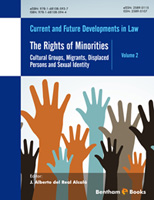Foreword
A book of inspiration.
The concept of caring in our human existence is a moral and ethical imperative. Our survival as a species depends on the quality of care we give to our fellow human beings. Caring must satisfy certain human needs and the giver should demonstrate some special interpersonal qualities and skills. Empathy is a significant quality which is sometimes misunderstood and is not synonymous with sympathy. This text crystallizes the concept as it is applied to caring. The focus of this foreword is to give assent to the rigour of the current work.
Kathleen a creditable clinician and educator with years of experience, has boldly and passionately addressed the importance of empathy. This in-depth work has defined the construct of empathy and moved its comprehension to levels where clinicians, educators and students can appreciate its application. She has demonstrated the complexity and dynamics of empathic caring through theoretical knowledge, models of application and above all, through the lived experience of case studies. The emic view transcends the values, beliefs and assumptions of other individuals.
Individuals construct their experiences from perception, personal evaluation and other cognitive brain functioning. This unique and lived experience is what empathy sets out to capture and understand, not only from the individual describing it, but also from the emotions which accompany the experience. When empathy is not experienced by the recipient, mistrust, not being understood and “being alone” is a devastating feeling. Chapter 2 aptly addresses these feelings. On the other hand, chapter 4 highlights the experience of Rebecca when empathy is felt. This is a powerful humanistic and spiritual feeling.
Apart from the various levels of empathy such as understanding, acquiring trust and the accurate interpretation of the agony or suffering to the emotional feeling, as you travel with the individual, Kathleen has raised many poignant questions about the nature of empathy. Are humans naturally empathetic? Is it a nature/nurture issue? Can empathy be cultivated? She attempted to answer these questions well with a creditable body of theory, research and case experiences. She has recommended many good ideas of how to cultivate empathy in chapter 5.
So far, the focus of discussion has been on specific extracts of Kathleen’s brilliant work. Let us briefly turn our attention to the challenging aspects of empathy. Life has many exciting pleasures however; it can be frustrating with anger, disappointments and self destruction. These are difficult situations and experiences to comprehend especially when bias, beliefs and values are considered. She has again, focused on many insights to dealing with difficult situations. Bias, beliefs and values can deter an empathic response to such experiences. Kathleen has approached this with a measured sensitivity and warmth in chapter 6.
In conclusion, this text is an exceptional piece of work which addresses the concept of empathy from different perspectives. Its uniqueness lies in the multimodal approaches which is embedded with evidenced informed practice research material. She has synthesized research, education and clinical practice experiences well. Her dedication to care as a moral and ethical imperative is highly commended and, she is wished the best of success in her inspiring work to others in the field.
Michael Miller





